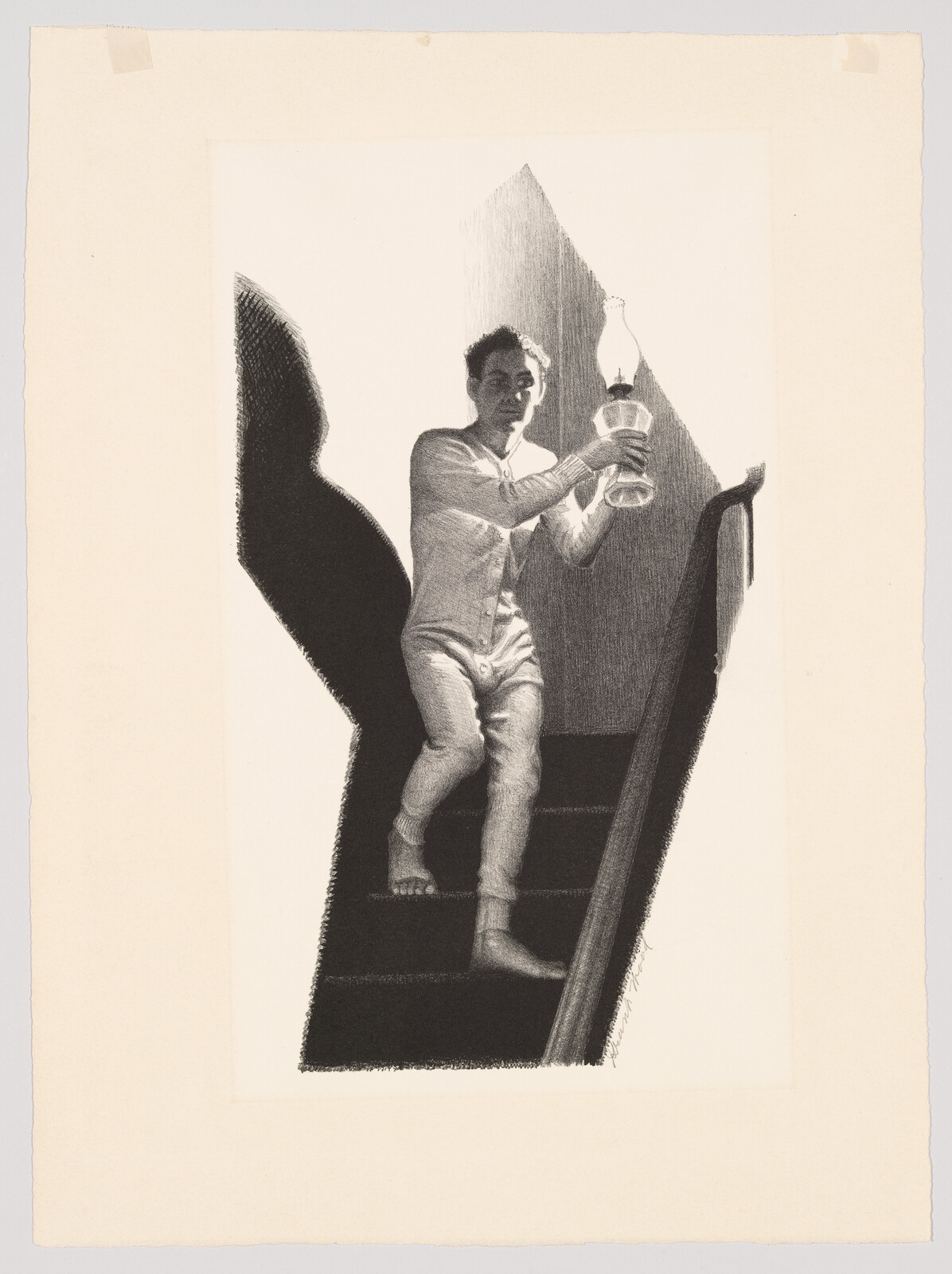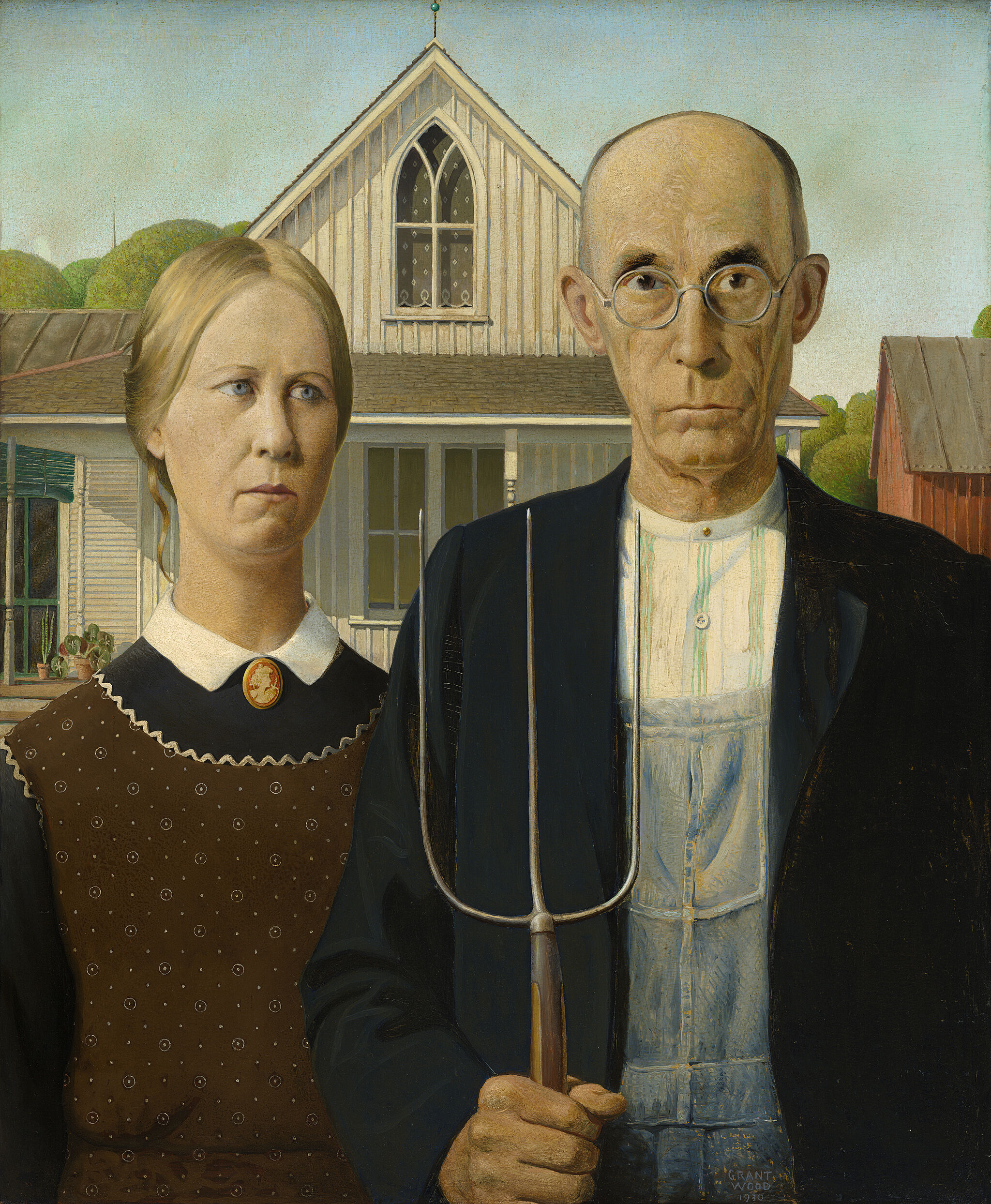Sultry Night, 1939
Feb 16, 2018
0:00
Sultry Night, 1939
0:00
Narrator: Wood rarely painted such frank portraits of masculinity. He himself described the image as a kind of practical ritual of his boyhood, necessary before modern bathrooms. His contemporaries did not see it in such innocent terms. Wood first produced the composition as a painting, then as this lithograph intended for sale through a mail order catalog.
R. Tripp Evans: The lithograph is banned by the U.S. postal system—being an example of pornography—and the painting itself, Wood ends up destroying.
Narrator: R. Tripp Evans.
R. Tripp Evans: When Sultry Night the painting was unveiled, there were gasps and embarrassment at this image of a very frontally nude, front and center male figure. And the way that his sister described Wood's counter-reaction to that was that, due to his own sense of panic about the reception of this painting, he actually cut out the figure of the farmer—only the nude within the painting—and burned it.
And it was a source of tremendous pain for him, in a lot of ways. It was a controversy unlike ones that had come before paintings like Daughters of Revolution or American Gothic. He was perfectly happy confronting critics about controversy surrounding satire of social foibles, that kind of thing.
But controversy that began to tread on issues of sexuality, morality, homoerotism, the male body, those kinds of issues really became quite dangerous for Wood, and increasingly so towards the end of his career.


